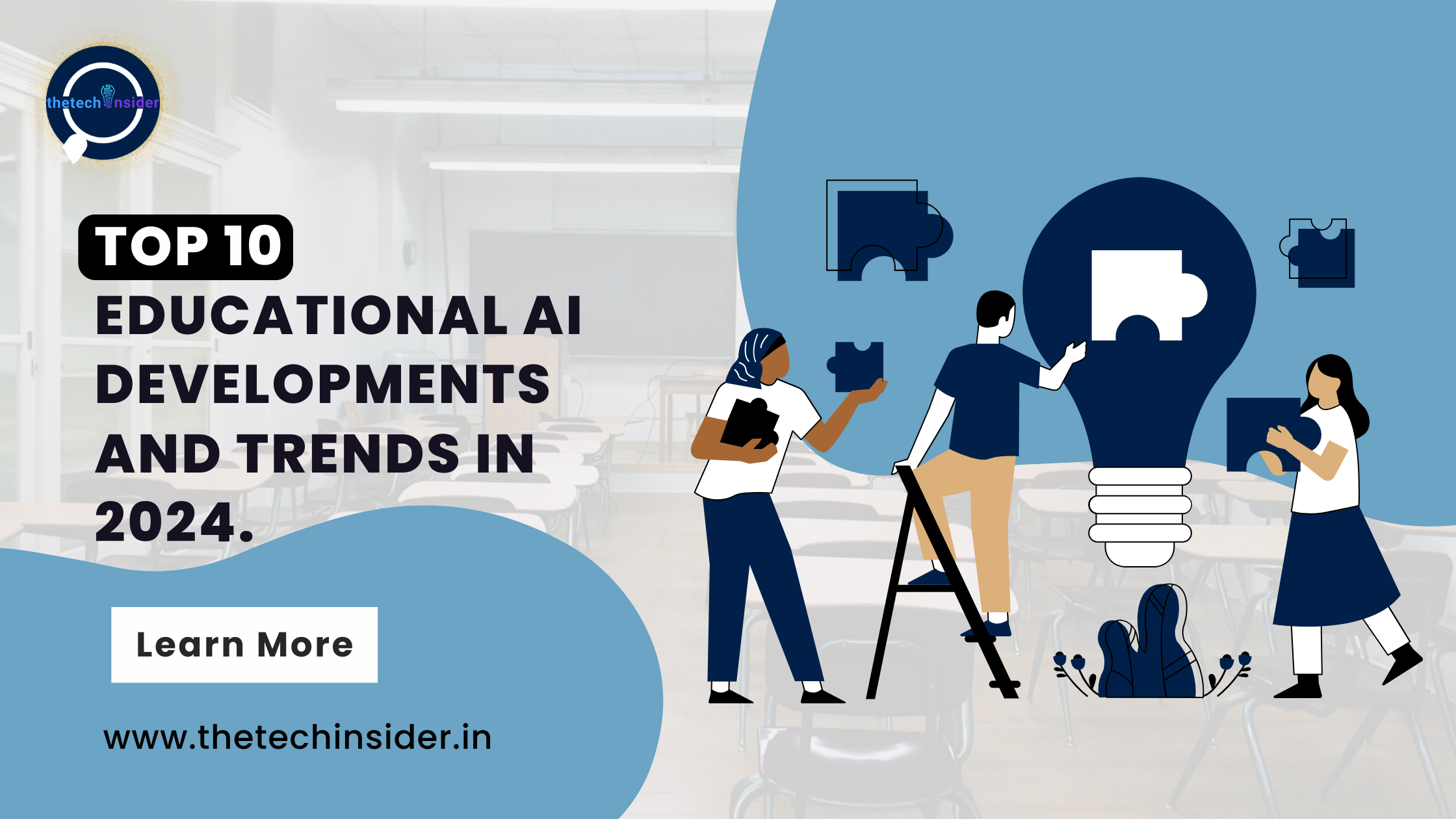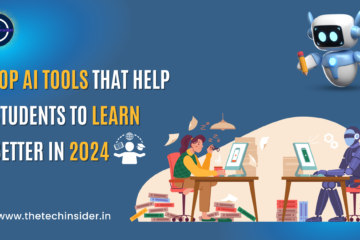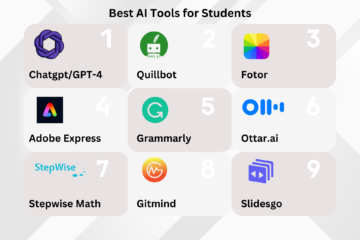Keeping tabs on the latest in AI reveals its impact across industries like finance and healthcare. However, it’s in Education where AI truly stands out.
The shift toward personalized learning has fueled Educational AI in the education market, hitting a value of USD 4 billion in 2022. Projections suggest a steady growth with a compound annual growth rate (CAGR) exceeding 10% from 2023 to 2032.

Table of Contents
Adaptive Learning Tech and Educational AI
AI-enabled adaptive learning is a cutting-edge teaching strategy that uses AI in Education (AIED) to give every student a customized learning experience. This novel approach evaluates students’ learning styles, areas of strength, and weaknesses using data analytics and machine learning algorithms.
The system dynamically adapts the educational material’s pace, content, and difficulty level to the learner’s needs and competencies based on this analysis.
Providing a learning experience tailored to students’ performance, availability, and preferences, offering specific materials and challenges.
It builds on students’ weak points in learning and highlights what they excel at. It also responds in real-time to the student, providing an interactive experience, and giving teachers a complete map of the student’s learning activity and performance.
Automated Graded Assessments
AI-driven feedback systems are revolutionizing the assessment of exams. Both educators and students can benefit greatly from these systems due to their efficacy, reliability, speed, and flexibility.
Exam evaluation is largely being transformed by artificial intelligence (AI) technologies, such as natural language processing, pattern recognition, and adaptive learning.
As generative AI tools are data-driven, they can be instructed to understand particular grading criteria. They can use this comprehension to grade the work of students efficiently.
Due to such technologies, the pace of evaluation will increase which will eventually lead to more time in the hands of the students to practice more.
Augmented Reality and Virtual Reality in Education
Augmented Reality (AR) and Virtual Reality (VR) technologies have revolutionized learning approaches through immersive digital experiences, interactive environments, simulation, and engagement.
AR and VR introduce students to immersive digital experiences that cannot be replicated through traditional teaching methods, enabling them to better engage with complex material beyond just lectures and textbooks, while enabling lecturers to customize content for individual learning styles.
Yet, these technologies are in the developing stage and require massive investment and mass customization to meet the high demand in education.
Natural Language Processing (NLP) For Language Learning
Natural language processing (NLP) is a machine-learning technology that gives computers the ability to interpret, manipulate, and comprehend human language.
It is based on effective approaches for providing a solution for various problems and issues in education. Natural Language Processing provides solutions in a variety of different fields associated with the social and cultural context of language learning. It is an effective approach for teachers, students, authors, and educators to assist with writing, analysis, and assessment procedures.
Natural Language Processing is widely integrated with a large number of educational contexts such as research, science, linguistics, e-learning, and evaluation systems, and contributes to resulting positive outcomes in other educational settings such as schools, higher education systems, and universities.

AI in Gamification of Learning
Gamification AI has the potential to revolutionize user engagement and experience across numerous industries.
Education Gamification AI can help easily create personalized learning pathways for students, adapting to their learning styles and their progress. This can improve motivation, engagement, and overall learning outcomes.
To successfully implement gamification AI in your organization, consider the following steps:
Define your objectives: Identify the goals you want to achieve with gamification AI, such as increased user engagement, retention, or conversion rates.
Choose the right AI platform: Research and select an AI platform that aligns with your objectives and offers the necessary tools and features.
Develop a gamification strategy: Design a comprehensive gamification strategy that incorporates AI-driven personalization and adaptive learning.
Monitor and optimize: Regularly analyze user data and feedback to refine your gamification AI approach and ensure optimal results.
One notable example of gamification AI in action is Duolingo, a popular app for learning languages. Duolingo uses AI-driven algorithms to personalize each user’s learning experience, tailoring lessons to their skill level, interests, and progress.
AI-Powered Proctoring in Smart Classrooms
During the pandemic, many educational institutions had to shift to online exams, which created a need for effective proctoring solutions to maintain academic integrity. AI-powered proctoring tools provided a solution to this problem by automating the monitoring process and flagging any suspicious behavior.
With the rise of online and remote learning, ensuring academic integrity during assessments has become a significant concern. Although there are tools and mechanisms to do this, AI-based proctoring can help make monitoring even more efficient and scalable for online exams.
By leveraging facial recognition, eye tracking, and audio analysis, AI can detect suspicious behavior and detect plagiarism or AI-generated content to help bring more integrity to education.
It can even be used for grading, reducing teachers’ time spent on grading assignments or tests by 70%.
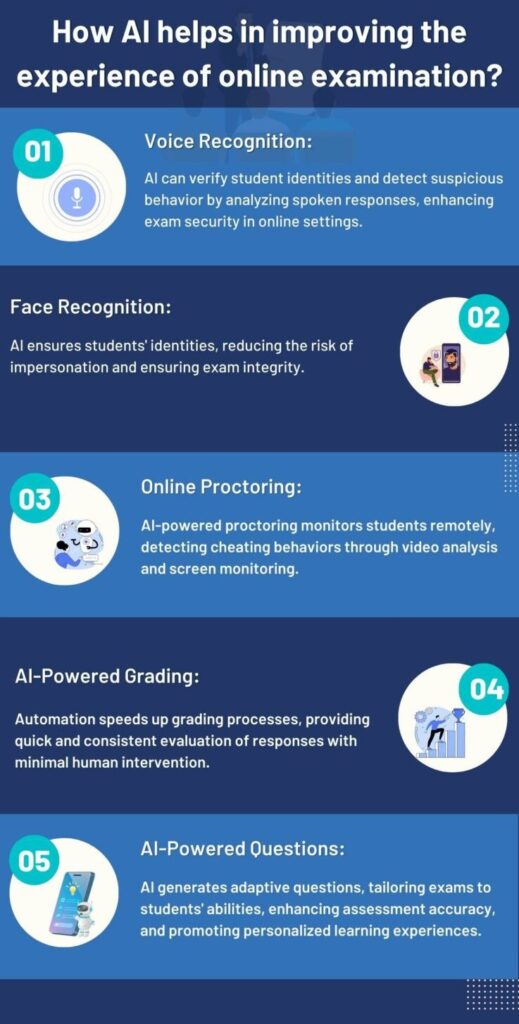
Emotionally Intelligent AI Assistants
Emotionally Intelligent AI Assistants represent a burgeoning area within the field of artificial intelligence and education. These assistants are designed to recognize, understand, and respond to the emotional states and needs of learners in educational settings.
AI assistants equipped with emotional intelligence capabilities employ affective computing techniques to recognize and respond to students’ emotional states and needs.
By offering empathetic support, encouragement, and coping strategies, emotionally intelligent AI assistants foster a positive learning environment, promoting emotional well-being and resilience among learners.
Personalized AI Tutor for Self-Study
In 2024, a new chapter unfolds in the world of education technology, marked by the rise of personal AI tutors. Imagine a world where a student, let’s call her Srushti, sits down with her tablet and opens an app. This isn’t just any app; it’s her personal AI tutor, designed to understand and adapt to her unique learning style.
Srushti uploads her biology notes into the app. Within seconds, the AI, which she’s named “Alex,” analyzes the material and begins to engage her in a thought-provoking discussion. Alex doesn’t just regurgitate information; it asks Srushti questions, challenging her to think critically about the topic. When she struggles with a concept, Alex breaks it down, using examples and even humor to make learning fun and effective.
Hybrid learning
Imagine a world where the boundaries between physical and virtual classrooms blur, creating an exciting, dynamic learning environment. This is the reality of hybrid learning, an innovative approach that’s reshaping education in 2024.
Meet Sita, a college student. She’s always been passionate about Environmental Science but equally intrigued by Graphic Design. Thanks to hybrid learning, Sita no longer has to choose between her two interests. She attends her Environmental Science classes in person, soaking in the campus life and interacting face-to-face with her peers and professors. But at the same time, she’s enrolled in an online Graphic Design certification course, learning from renowned designers from around the globe.
Hybrid learning isn’t just a convenience for Emily; it’s a gateway to a richer, more diverse education. She enjoys the traditional college experience while gaining specialized skills online. This dual approach helps her stay ahead in the competitive job market.
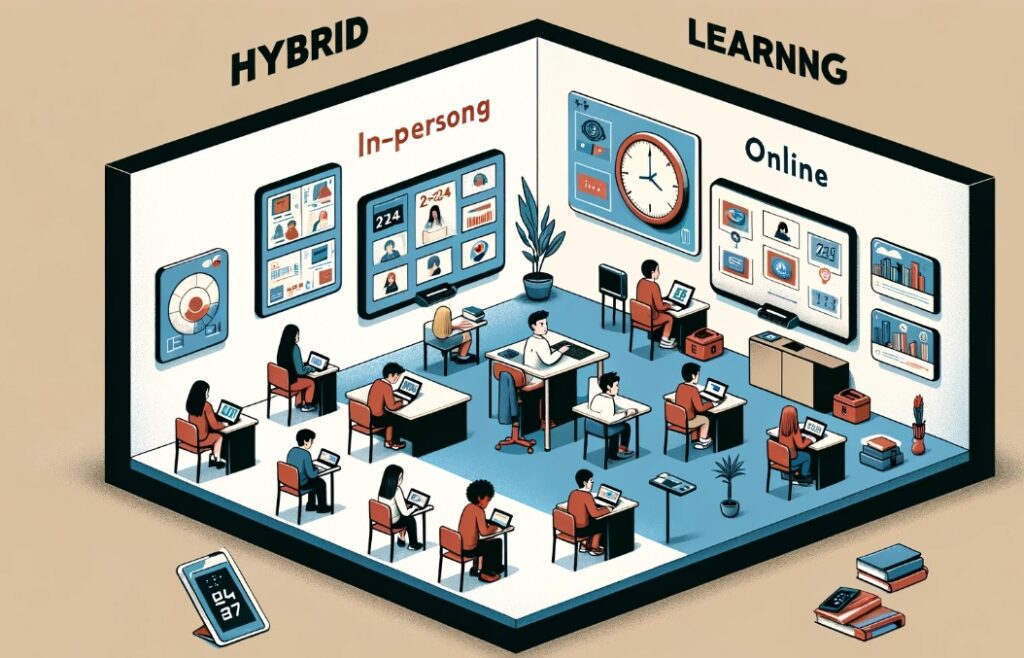
This step has also been taken by one of the most prestigious institutes in India. The Indian Institute of Technology Madras, Patna, and Guwahati have started the online BSc Program in Data Science and Applications, Electrical and Electronics, and more. The government of India has also taken many initiatives to promote online learning platforms such as Swayam. It offers students the opportunity to pursue hybrid learning by doing certifications or even a whole degree online.
Conclusion
In summary, the educational realm in 2024 is witnessing a profound shift driven by AI innovations. From personalized learning to immersive experiences, AI is reshaping how we teach and learn. These advancements foster collaboration and critical thinking, empowering students to become active participants in their education.
Looking forward, it’s crucial to address ethical and equity concerns surrounding AI in education. By responsibly integrating AI technologies, we can democratize access to quality education and empower learners from all backgrounds.
Ultimately, while technological advancements are vital, the true measure of success lies in their positive impact on individuals and society. As we embrace AI in education, let’s ensure it serves as a tool for inclusivity, innovation, and equitable learning opportunities for all.
Discover the latest in tech innovations and trends with The Techinsider blog channel. Stay ahead in the dynamic world of technology with concise insights, expert analysis, and breaking news. Join us as we explore the future of tech together!
Also, Since you seem interested in the new tech trends that are coming into town. Then The Techinsider’s team would strongly suggest you check out this blog by us regarding The Top 5 Technology Trends and Technological Innovations Unveiling in 2024. These 5 tech trends are taking a boost and will be in very high demand in the coming years.

